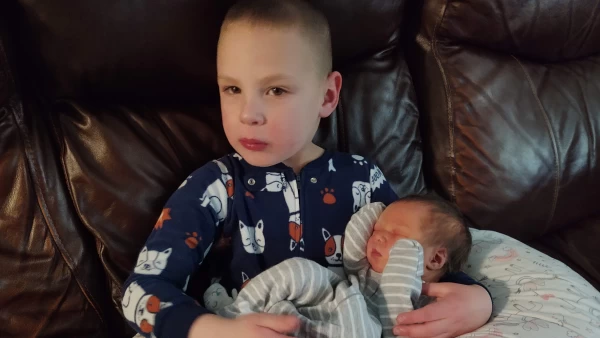Real Life Scenario
More often than we like to admit, we are addressing bad behaviors at the moment they are occurring. We are reacting to what we are seeing rather than clearly stating rules in advance. My two year old engages in jumping on the couch. Here is a typical parent/child interaction for this behavior: the parent yells “no jumping on the couch!”. The child continues to engage in the behavior. This continues for two main reasons: First, the child focuses on “jumping on the couch” and ignores the “no”. Second, they may have just gotten your attention. This becomes a desired behavior for the “look at me” effect.
Often, children ask “why?” and the parent states, “because I said so” as the child continues to jump. Typically, the parent will then engage in repeating the direction or getting louder which leads to the child crying, yelling, or continuing to jump. Children have a difficult time processing when instructions are repeated over and over without giving them time to engage in the appropriate behavior. Children also have a hard time processing instructions when the volume/tone changes.
Proactive Rules
Oftentimes, when a child engages in bad behavior we say, “No!” immediately. However, has the rule been stated prior to the child engaging in bad behavior? “They should just know” is not the correct response. If “they knew” then the child may not be engaging in that negative behavior. When rules are made well in advance then there is no question whether the rule has been addressed or not.
Discussing the rules with your child in advance ensures you are both in a calm state. This allows you to clearly explain the reason for the rule and gives your child the opportunity to ask questions. When your child asks, “why can’t I jump on the couch?”. Your response will more likely be “for safety” when you are in a calm state versus the typical “because I said so” when you are upset.
Once rules have been established, they should be posted in a common area for reference. As adults, we often use sticky notes for daily and weekly reminders. Children need the same reminders. Have your child help choose where to put the rules so they can be seen daily. Review the rules regularly so everyone knows the expectations.
Language/Age Appropriate
Keep rules age appropriate and positive. Avoid using negative words like “no”, “don’t”, and “never”. Use words like “always” and “do”. In other words, rules are actions that you want your children to do. A rule for a two year old may be that couches are for sitting instead of no jumping on the couch. The rule is in positive terms: what you do on the couch versus what you don’t do. An example for a 16 year old is to be home by 9 pm versus don’t be home after 9 pm.
If your child cannot read, post the rules as pictures. You can utilize the internet to find images of a child engaging in appropriate behavior or take photos of your own child engaging in the desired behavior. Once your rules are age appropriate, choose the most important rules that you want to focus on. When the list gets too long it becomes hard to keep track of the expectations. A two year old may only have three rules, where a 5 year old may have 4-5 rules.
Practice Makes Perfect!
Once you establish the rule, have your child repeat the rule. This ensures understanding. Then have your child practice the rule. If your rule is that couches are for sitting, then have your child practice sitting on the couch. Provide positive specific praise like “great job sitting on the couch”. This reinforces the behaviors that your child is supposed to engage in and they are receiving your attention for doing the right thing which helps build positive relationships.
Privilege and Consequences
Once the rule has been established, make sure that the child understands the privilege as well as the consequence that correlates to the rule. Privileges and consequences should be naturally occurring. Example, sitting on the couch may have the privilege of watching TV. The opposite, jumping on the couch leads to the TV being turned off. Arriving home by 9 pm has the natural privilege of staying out late again. Whereas coming home after 9 pm, leads to no longer being able to stay out late.
Parenting is hard. Making rules to increase positive behaviors is less difficult than dealing with challenging behavior in the moment. Set your child and yourself up for success by making rules proactive rather than reactive. Keep the relationship with your child positive to help continue to build a positive relationship!
Resource: Latham, G.I. (1990). The power of positive parenting. North Logan, UT: P&T Ink.
